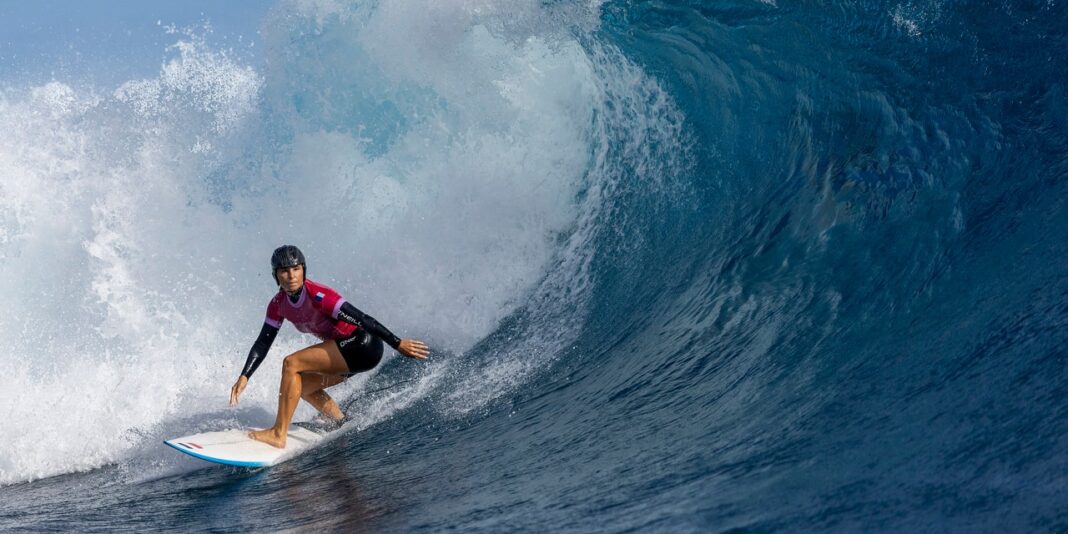The crystal-clear waves of the Olympic surfing beach in Tahiti might look like paradise from the comfort of your couch, but drama under the surface of the Pacific is making this year’s surfing competition way more dangerous than you may think.
Across the world from the action in Paris, Olympic surfers are living and competing in the village of Teahupo’o, which ominously roughly translates to “the wall of skulls.” This wave break is considered one of the heaviest (surfer-speak for big, fast, and dangerous) in the world, and for years, many of the world’s top surfers didn’t think the wave was even surfable. The combination of the powerful barreling wave and its proximity to a shallow, sharp reef can be deadly. Teahupo’o has taken five lives, according to . And it’s injured dozens more.
When Olympic kayakers face rapids on a man-made course, they wear helmets and life preservers. Water polo players don ear protection. The most skilled dressage riders strap on a helmet for a ballet-like performance on a flat arena. Yet most surfers facing one of Mother Nature’s most deadly forces wear little more than a rash guard. What gives?
The rules set by the International Surfing Association (ISA) do not require Olympians to wear helmets, but the ISA released a statement recommending protective headwear ahead of this year’s exceptionally dangerous conditions in Paris. Though falling into water might not sound all that scary, the real danger in Teahupo’o comes from the reef. Just below the surfers in Tahiti—usually invisible on the TV broadcast—is a field of coral that can cause serious damage, especially if you hit it with the inertia of a 12-meter wave behind you.
Ultimately, the helmet question is up to the athletes. And unfortunately, as a 2020 study published in shows—aptly titled “‘Helmets aren’t cool’: Surfers’ perceptions and attitudes towards protective headgear”—many just haven’t thought it was necessary. According to the study, the surfers believed “uncomfortable” helmets would “hinder the performance of [surfing]” and make them look “uncool” in a sport where aesthetics often matter. But, as the researchers wrote, there’s evidence to support that head protection can be vital for safety. The study notes that “head-related injuries comprise a considerable proportion of surfing injuries.” And head trauma can have severe, short- and long-term consequences, including concussion, seizures, and dizziness—not to mention, as the study authors pointed out, the risk of drowning.
Since most surfers don’t wear safety gear during training, it’s natural not to want to change things up on one of the biggest days of their career. However, conditions at this year’s Games may force some athletes to reconsider. French surfer Johanne Defray fell head-first into the coral on her first training wave on July 28. She avoided a concussion, but needed four stitches, according to . She wore a helmet during competition on August 1, and it’s probably safe to assume she’ll be sporting one for the remainder of her time in Teahupo’o.






Wonderful beat I wish to apprentice while you amend your web site how could i subscribe for a blog web site The account aided me a acceptable deal I had been a little bit acquainted of this your broadcast provided bright clear idea